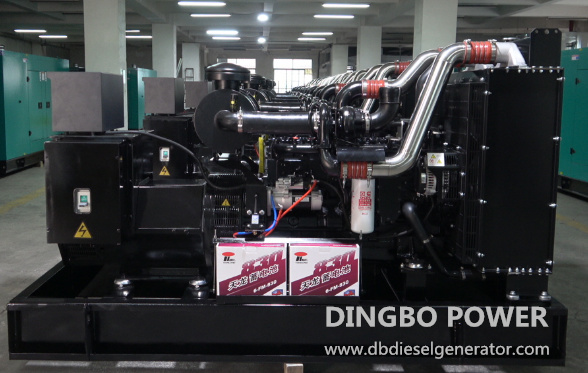dingbo@dieselgeneratortech.com
+86 134 8102 4441

- Home
- Products
- About Us
- Service
- News
- Technical Support
- Contact Us
dingbo@dieselgeneratortech.com
+86 134 8102 4441
Jun. 26, 2024
Today, diesel generators have been a popular choice for many industries due to their superior fuel efficiency, reliability, durability and versatility. Without doubt they will remain the leading source of both portable and emergency power generation for the foreseeable future. This article explains what a diesel generator governor is and introduces different types of governor.
A diesel generator governor is a device that is responsible for regulating the the speed of the engine to maintain the required output specifications. It acts as the speed controller for the diesel engine, which is an essential component of the diesel generator set. The governor is designed to respond to load changes and control the fuel to the engine cylinders to maintain a stable and consistent speed. A constant engine speed is vital to maintain the frequency of the generator output.

Generally, the basic governor elements include a speed sensor, a speed setting (reference) element, an error sensing/correcting element, a power element sufficient to manage engine fuel controls, a compensation/resetting/stabilizing element and a means of determining the method of operation. The governor's set point is set by the operator or system controller. The governor receives feedback on the engine's rotational speed from a speed sensor and compares the actual speed of the engine with the set point and calculates the speed error. It will generate a control signal that determines the position of the fuel control mechanism based on the speed error and then send it to the fuel system to adjust the fuel flow rate to the engine. The fuel control mechanism will adjust the fuel flow accordingly and the engine power output also changes. The governor continuously monitors the speed and makes fine adjustments to maintain a stable power output.
Governors equipped on diesel generator sets can be divided into the following types based on working principle:
Mechanical governors use a mechanical linkage which is connected a flyweight to control the fuel supply to the engine. The flyweight spins at the same speed as the engine and it moves in or out accordingly when the engine speed changes, which in turn controls the amount of fuel injected. This interfaced mechanical engine control functions with generator electrical load needs. Additional hardware installation can allow for remote communication and operation of the emergency power control system. The mechanical controls often use a proportional control to maintain the speed at a fixed level. Mechanical governors are durable and simple to maintain,but they don’t reach the exact target speed. These governors are commonly found on earlier generators.
Electronic governors are typically used in newer generators. These governors use an electronic control system which interfaces and controls engine and generator control functions to control the fuel supply to the engine, facilitating a constant, reliable power source. The electronic governor control system is mainly compromised of three components: Analog and Digital Signal Mechanism, Electronic Control Module (ECM) and Engine and Generator Interface Controls. An engine speed sensor which can detect the engine speed is fitted and linked to the electronic governor. As the engine speed increases or decreases, the governor adjusts the fuel supply to the engine. Electronic governors offer better regulation than a mechanical governor and they may be more complex to maintain.
A hydraulic governor is a device that adjusts the diesel engine speed by adjusting the fuel supply of the diesel engine. Its working principle is based on the principle of fluid self-regulation. When the load changes, the engine speed will also change accordingly. The governor adjusts the generator speed by increasing or reducing the fuel supply of the diesel engine to keep it at the set point. Hydraulic governors have a wide range of speed adjustment, a high adjustment accuracy, high sensitivity and good stability. Hydraulic governors are widely used in large and medium-sized diesel generators. However, its structure is complex and high management requirements are required.
Pneumatic governors use a pneumatic system to control the fuel supply to the engine. The governor is connected to a control valve, which regulates the flow of fuel to the engine. As the engine speed increases or decreases, the governor adjusts the position of the control valve, which in turn adjusts the fuel supply to the engine. These governors have a simple structure, high sensitivity at low speed and reduced power, which are commonly used in small size diesel generators.
As the name suggests, these governors use a combination of the above types to control the fuel supply to the engine. For example, they may use a combination of mechanical and electronic systems or a combination of mechanical and hydraulic to control the fuel supply. These governors are highly accurate, but they may be more complex to maintain and may be more prone to failure.
Diesel generator governors automatically increase and decrease the fuel supply of the fuel injection pump according to the load changes, so as to to regulate the engine speed and maintain a stable power output. They are crucial for applications where a consistent power supply is required. The governors can be divided into mechanical governors, electronic governors, hydraulic governors, pneumatic governors and combination governors based on their working principles. The choice of governor type depends on the specific needs of the application. Don’t hesitate to reach out for any further information or assistance regarding to diesel generator governors. Contact us at dingbo@dieselgeneratortech.com, and we will gladly help you.
Quicklink
Mob.: +86 134 8102 4441
Tel.: +86 771 5805 269
Fax: +86 771 5805 259
E-mail: dingbo@dieselgeneratortech.com
WhatsApp: +86 134 8102 4441
Add.: No. 10 Kechuang Road, High tech Zone, Nanning, Guangxi, China